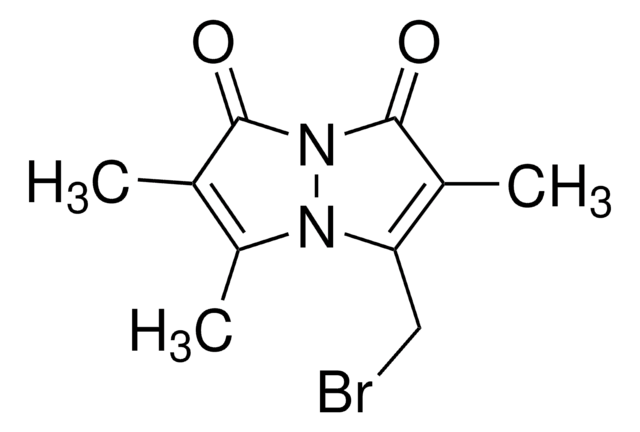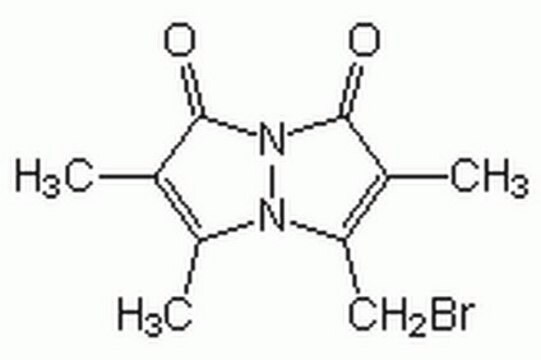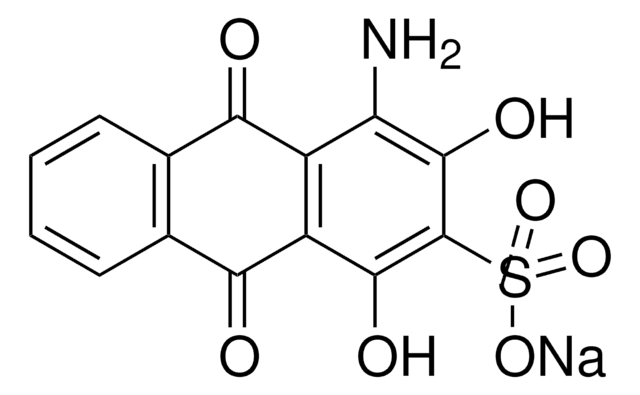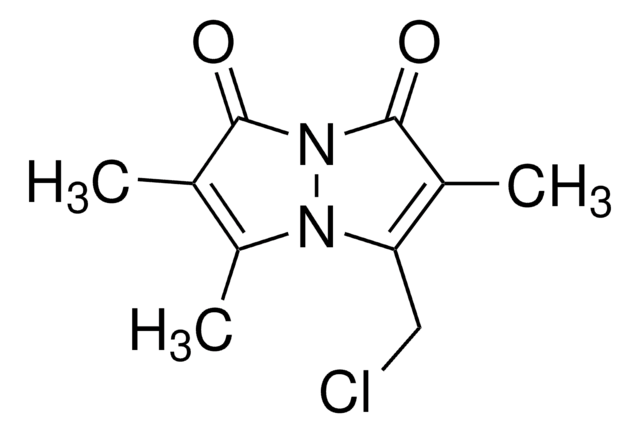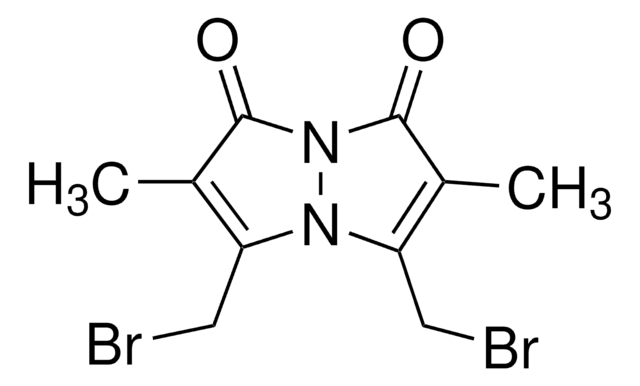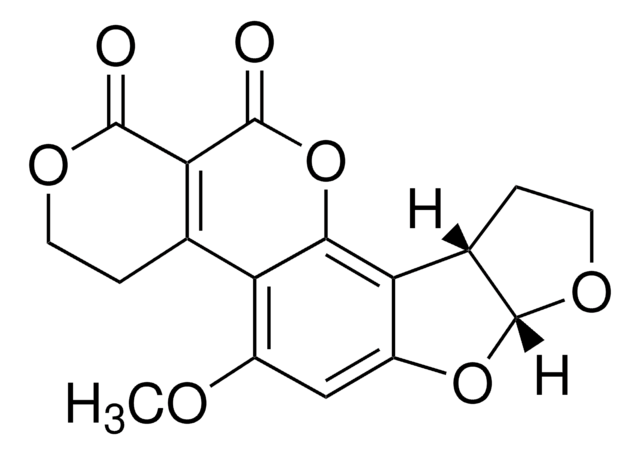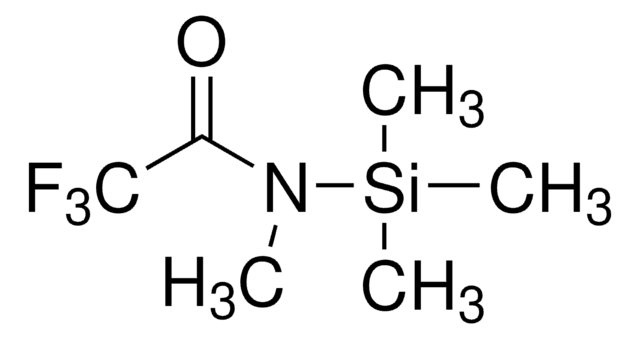71028
Monobromo(trimethylammonio)bimane bromide
suitable for fluorescence, ≥90.0% (HPLC)
Synonym(s):
(Trimethylammonio)monobromobimane, 5-(Bromomethyl)-N,N,N,2,6-pentamethyl-1,7-dioxo-1H,7H-pyrazolo[1,2-a]pyrazole-3-methanaminium bromide, Brombimane q, Thiolye MQ, qBBr
About This Item
Recommended Products
Assay
≥90.0% (HPLC)
form
powder
solubility
DMSO: 5 mg/mL
fluorescence
λex 380 nm; λem 475 nm in 0.1 M phosphate pH 7.5
suitability
suitable for fluorescence
storage temp.
2-8°C
SMILES string
[Br-].CC1=C(CBr)N2N(C1=O)C(=O)C(C)=C2C[N+](C)(C)C
InChI
1S/C13H19BrN3O2.BrH/c1-8-10(6-14)15-11(7-17(3,4)5)9(2)13(19)16(15)12(8)18;/h6-7H2,1-5H3;1H/q+1;/p-1
InChI key
FCRPMMVPBVOKQS-UHFFFAOYSA-M
Looking for similar products? Visit Product Comparison Guide
Biochem/physiol Actions
Packaging
Other Notes
Storage Class Code
11 - Combustible Solids
WGK
WGK 3
Flash Point(F)
Not applicable
Flash Point(C)
Not applicable
Personal Protective Equipment
Certificates of Analysis (COA)
Search for Certificates of Analysis (COA) by entering the products Lot/Batch Number. Lot and Batch Numbers can be found on a product’s label following the words ‘Lot’ or ‘Batch’.
Already Own This Product?
Find documentation for the products that you have recently purchased in the Document Library.
Our team of scientists has experience in all areas of research including Life Science, Material Science, Chemical Synthesis, Chromatography, Analytical and many others.
Contact Technical Service